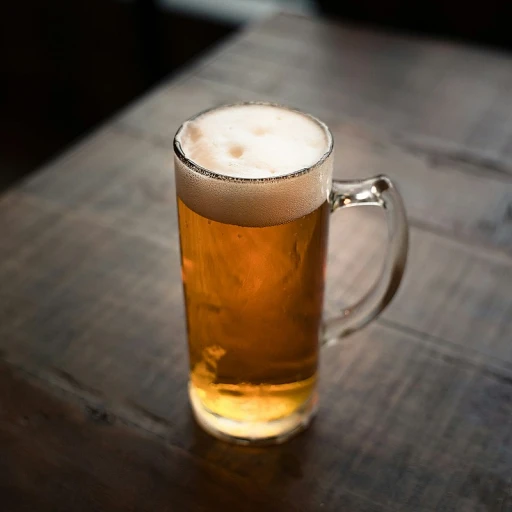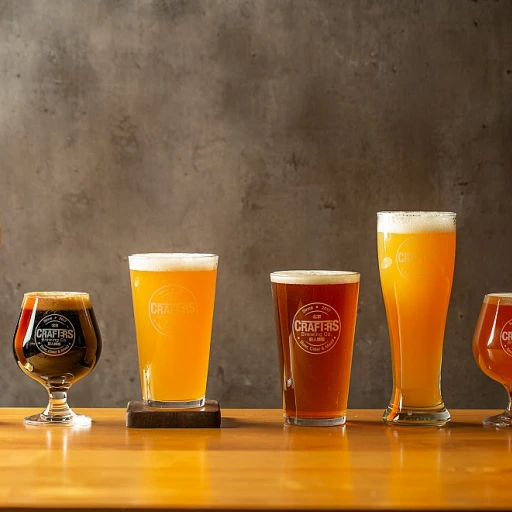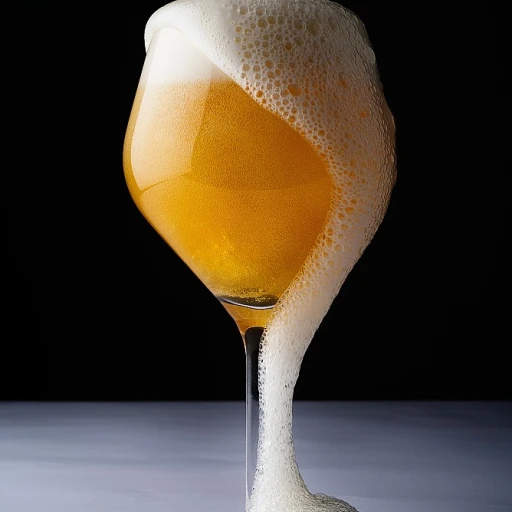
The Basics of German Hefeweizen
Understanding the Essence of German Hefeweizen
German Hefeweizen, often celebrated for its distinctive flavors and cloudy appearance, holds a revered place in the world of beer. At its core, it is a wheat beer distinguished by a few key characteristics that make it stand out from other styles. This traditional Bavarian beer is known for its light body, pale amber to straw color, and pronounced carbonation. Often, its unique flavor profile includes notes of banana and clove, which are not additions but rather natural byproducts of the yeast strain used during fermentation. The term "Hefeweizen" translates to "yeast wheat," and indeed, the yeast suspension contributes to its signature cloudy appearance and effervescent charm. Additionally, Hefeweizen is notably different from other beers due to its higher wheat content, traditionally at least 50% or more. This not only influences the beer’s appearance and texture, but it also enhances its refreshing qualities, making it a perfect choice for a sunny afternoon. For more on the appeal of distinctive wheat beers, check out this interesting take on the appeal of Blood and Honey Beer. This exploration enriches your understanding of how varied wheat beer can truly be. As we delve deeper into the intricacies of Hefeweizen, it becomes essential to look into how unmalted wheat plays a pivotal role in creating its unique taste and texture. From its historical roots in Bavaria to the modern brewing methods that perfect its craft, this style of beer is as rich in heritage as it is in flavor.Unmalted Wheat: A Key Ingredient
The Role of Unmalted Wheat in Hefeweizen
Unmalted wheat is more than just a secondary ingredient in the distinctive German hefeweizen; it plays a crucial role in shaping the beer's character. When crafting a hefeweizen, brewers often blend unmalted wheat with traditional malted grains to achieve its signature cloudy appearance and unique texture. This combination contributes to the classic, smooth mouthfeel that beer enthusiasts have come to associate with this style. Incorporating a significant portion of unmalted wheat in the grain bill imparts a soft, bready flavor that complements the fruity and spicy notes from the yeast. The wheat's high protein content helps create a fuller body while supporting the beer's impressive foam retention, resulting in the iconic, frothy head that tops a freshly poured glass. The presence of unmalted wheat also allows for creative variations of hefeweizen. As brewing traditions evolve, some artisans are experimenting with additional ingredients alongside unmalted wheat to offer new taste experiences to adventurous palates. If you're curious about what makes certain brews stand out in a crowded craft market, learning about these intriguing combinations might shed some light on their appeal (check out this spotlighting a beer that infuses diverse flavors). Overall, unmalted wheat is an indispensable component for the formation of a true German hefeweizen, contributing a distinct texture and taste profile that sets it apart from other wheat beers.Brewing Process and Techniques
The Art of Brewing a Traditional German Hefeweizen
The brewing process of a German Hefeweizen is a fascinating journey that combines traditional methods with the inclusion of unmalted wheat. This ingredient is integral in defining the unique taste and texture of this cherished Bavarian beer category. To begin with, the brewing process involves a meticulous selection of ingredients, where malted barley and unmalted wheat play pivotal roles. The unmalted wheat contributes to the beer's cloudy appearance and imparts a creamy, fuller-bodied mouthfeel. This choice of ingredients differentiates Hefeweizen from other wheat beers and is essential in achieving its characteristic flavor and appearance. Fermentation is another crucial stage where specialized yeast strains are used. These yeast strains are responsible for the Hefeweizen's distinctive notes of banana and clove. The interaction between the yeast, malted barley, and unmalted wheat results in a harmonious blend of flavors that are both complex and refreshing. Temperature control during fermentation is vital, as it influences the flavor profile significantly. Cooler temperatures might tilt the balance towards clove flavors, while slightly warmer fermentation can enhance the fruity banana notes. Finally, traditional techniques such as open fermentation vessels may also be utilized, allowing for more yeast interaction with the wort. This method not only enhances the flavor complexity but also preserves the traditional aspects of Bavarian brewing. For those fascinated by unique brewing techniques and flavors, exploring the world of fruity beers can offer further insight into how variations in ingredients and brewing processes create distinct beer profiles exploring the world of fruity beers.The Bavarian Influence
The Bavarian Tradition in Hefeweizen
The connection of Hefeweizen to Bavaria is undeniable and deeply ingrained in the heritage of this beer style. Bavaria, a state in southeastern Germany, boasts a rich brewing tradition that heavily influences how Hefeweizen is crafted today. Originally emerging from this region, Hefeweizen holds a special place in Bavarian culture, often being associated with the traditional "Biergarten" experience. Bavaria's brewing legacy is characterized by a strict adherence to quality and purity, famously encapsulated in the Reinheitsgebot or the Bavarian Purity Law. This regulation historically limited beer ingredients to hops, barley, water, and later yeast. Although the inclusion of wheat wasn't initially permitted, the rule was eventually relaxed, allowing brewers to experiment with and perfect wheat-based beers. This change led to the emergence of the refreshing, cloudy brews that we now know and love. Bavarian brewers are known to focus on traditional methods and use locally sourced ingredients, which contribute significantly to the distinct flavor profile of a classic Hefeweizen. The emphasis is often on creating a harmonious blend of banana and clove aromas, arising from the unique strains of yeast used in fermentation. Developing these flavors requires skill and experience, traits common among Bavarian brewers. While the Bavarian take on Hefeweizen is widespread, it's important to note the variations that have come about with the introduction of unmalted wheat into the brewing process, offering a new twist and expanding the complexity and mouthfeel of the beer. This adaptation, although a departure from tradition, still aligns with the Bavarian philosophy of quality and flavor innovation, adding an interesting layer to the already celebrated brew.Tasting and Pairing Tips
Enjoying the Flavors of German Hefeweizen
When it comes to savoring a German Hefeweizen, especially one crafted with unmalted wheat, the experience is truly unique. The use of unmalted wheat not only influences the brewing process but also significantly impacts the taste and texture of the beer. This results in a refreshing, slightly cloudy beverage with a distinctively smooth mouthfeel.
Flavor Profile and Aroma
The inclusion of unmalted wheat in the brewing process enhances the beer's natural sweetness and imparts a creamy texture. You'll notice hints of banana and clove, typical of traditional Hefeweizens, but with a slightly more pronounced grainy character. The aroma is often fruity and spicy, inviting you to take that first sip.
Perfect Pairings
Pairing food with a German Hefeweizen can elevate your tasting experience. Here are some suggestions:
- Light Salads: The crispness of a fresh salad complements the beer's refreshing qualities.
- Grilled Chicken: The subtle flavors of grilled chicken allow the beer's fruity notes to shine.
- Soft Pretzels: A classic Bavarian pairing, the saltiness of the pretzel enhances the beer's sweetness.
- Seafood: Dishes like shrimp or crab cakes pair well with the beer's light and fruity profile.
Serving Tips
To fully appreciate a German Hefeweizen, serve it in a tall, narrow glass to showcase its beautiful, cloudy appearance. Pour gently to preserve the beer's natural carbonation, and enjoy it slightly chilled to bring out its complex flavors.













